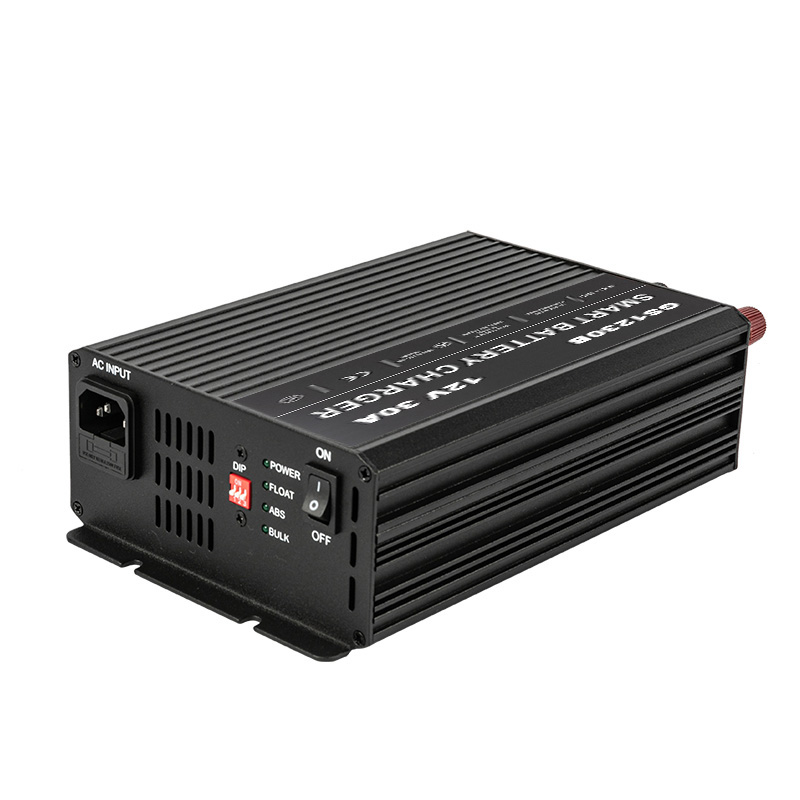Powering Up: Common Battery Types Charged by AC to DC Chargers
2023-12-29
Introduction:
In a world fueled by technology, batteries play a pivotal role in keeping our devices and vehicles operational. AC to DC chargers stand as indispensable companions in this realm, serving as the conduits that transform electrical power from our household outlets into the lifeblood needed to recharge various battery types. In this blog, we delve into the common battery types that are routinely charged using AC to DC chargers, exploring the diverse landscape of rechargeable power sources.
1. Lead-Acid Batteries:
- Applications: Widely used in automotive applications, lead-acid batteries power vehicles ranging from cars and trucks to motorcycles. They are also employed in uninterruptible power supply (UPS) systems, solar power storage, and electric scooters.
- Charging Considerations: AC to DC chargers are commonly used to recharge lead-acid batteries, offering the necessary voltage and current regulation required for safe and efficient charging.
2. Lithium-Ion Batteries:
- Applications: Lithium-ion batteries have become the standard for many portable electronic devices, including smartphones, laptops, cameras, and power tools. They are also prevalent in electric vehicles (EVs) and electric bikes.
- Charging Considerations: AC to DC chargers are commonly used for charging lithium-ion batteries in devices like laptops and power tools. However, specialized charging systems are often employed for larger lithium-ion batteries found in electric vehicles.
3. Nickel-Cadmium (NiCd) Batteries:
- Applications: Nickel-cadmium batteries were once widely used in portable electronics, but their popularity has declined due to environmental concerns. They are still found in some power tools, emergency lighting systems, and other industrial applications.
- Charging Considerations: AC to DC chargers can be used for nickel-cadmium batteries, providing the required charging voltage and current. However, these batteries have been largely replaced by newer technologies.
4. Nickel-Metal Hydride (NiMH) Batteries:
- Applications: Nickel-metal hydride batteries are commonly found in various consumer electronics, such as digital cameras, flashlights, and portable gaming devices. They are also used in hybrid electric vehicles (HEVs).
- Charging Considerations: AC to DC chargers are suitable for charging nickel-metal hydride batteries, offering the necessary voltage and current control for efficient charging.
5. Sealed Lead-Acid (SLA) Batteries:
- Applications: Sealed lead-acid batteries are commonly used in applications where maintenance-free and reliable power storage is required. They find applications in alarm systems, medical devices, and emergency lighting.
- Charging Considerations: AC to DC chargers are well-suited for charging sealed lead-acid batteries, providing the appropriate voltage and charging profile for these applications.
6. Alkaline Batteries (Rechargeable):
- Applications: While alkaline batteries are typically considered disposable, rechargeable versions have been developed. These are used in various devices like digital cameras, remote controls, and flashlights.
- Charging Considerations: AC to DC chargers designed for rechargeable alkaline batteries can efficiently charge and rejuvenate these cells for extended use.
7. Gel Cell Batteries:
- Applications: Gel cell batteries, a type of lead-acid battery, are commonly used in applications where maintenance-free and deep-cycle capabilities are essential. They find use in solar power systems, wheelchairs, and marine applications.
- Charging Considerations: AC to DC chargers are suitable for charging gel cell batteries, offering the necessary charging parameters for these specialized applications.
8. AGM (Absorbent Glass Mat) Batteries:
- Applications: AGM batteries, another variant of lead-acid batteries, are widely used in automotive applications, marine vessels, and renewable energy systems. They offer a maintenance-free and versatile solution.
- Charging Considerations: AC to DC chargers are commonly used for charging AGM batteries, providing the precise voltage and current control required for efficient and safe charging.
Conclusion:
The world of batteries is diverse, with each type catering to specific applications and requirements. AC to DC chargers serve as the linchpin in the charging ecosystem, providing the essential link between our electrical outlets and the varied batteries that power our devices and vehicles. Whether it's the starting battery in our cars, the lithium-ion battery in our smartphones, or the lead-acid battery in our emergency lighting systems, AC to DC chargers play a crucial role in keeping our lives powered up and connected.



